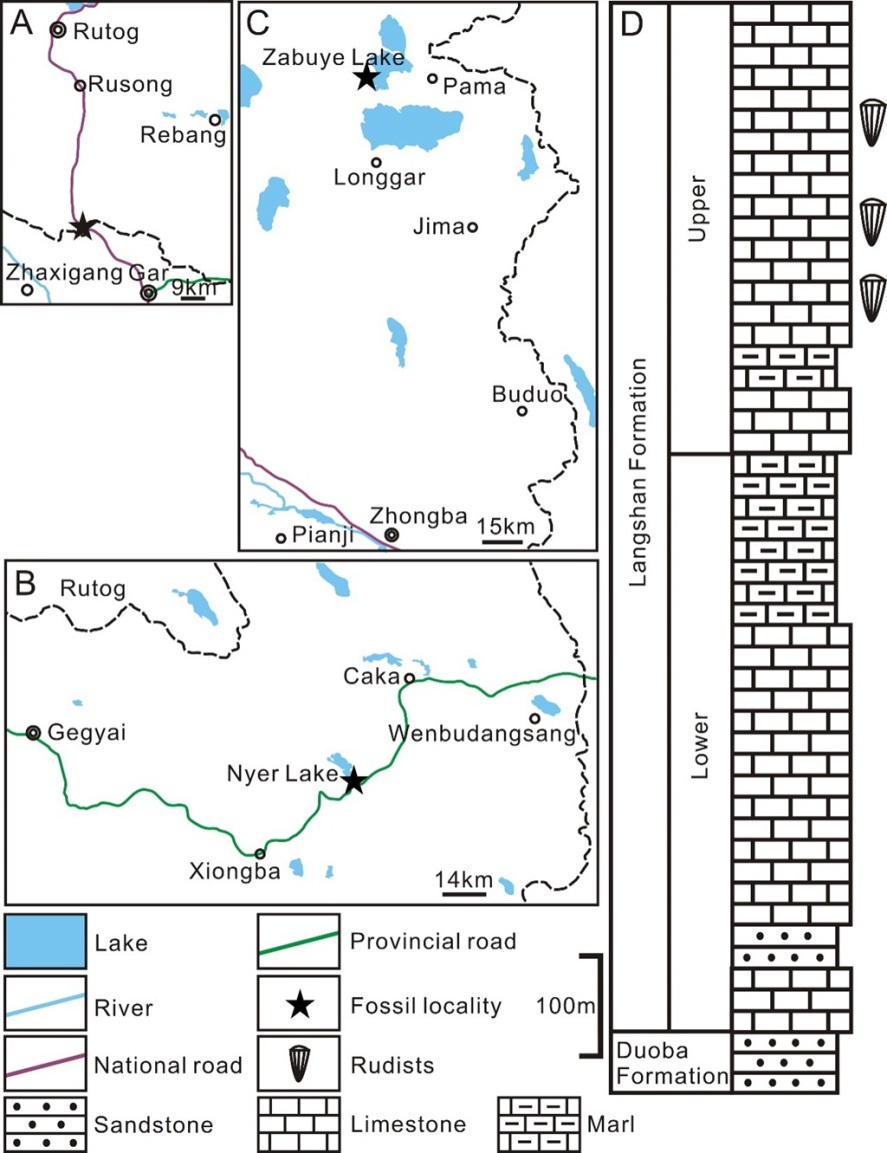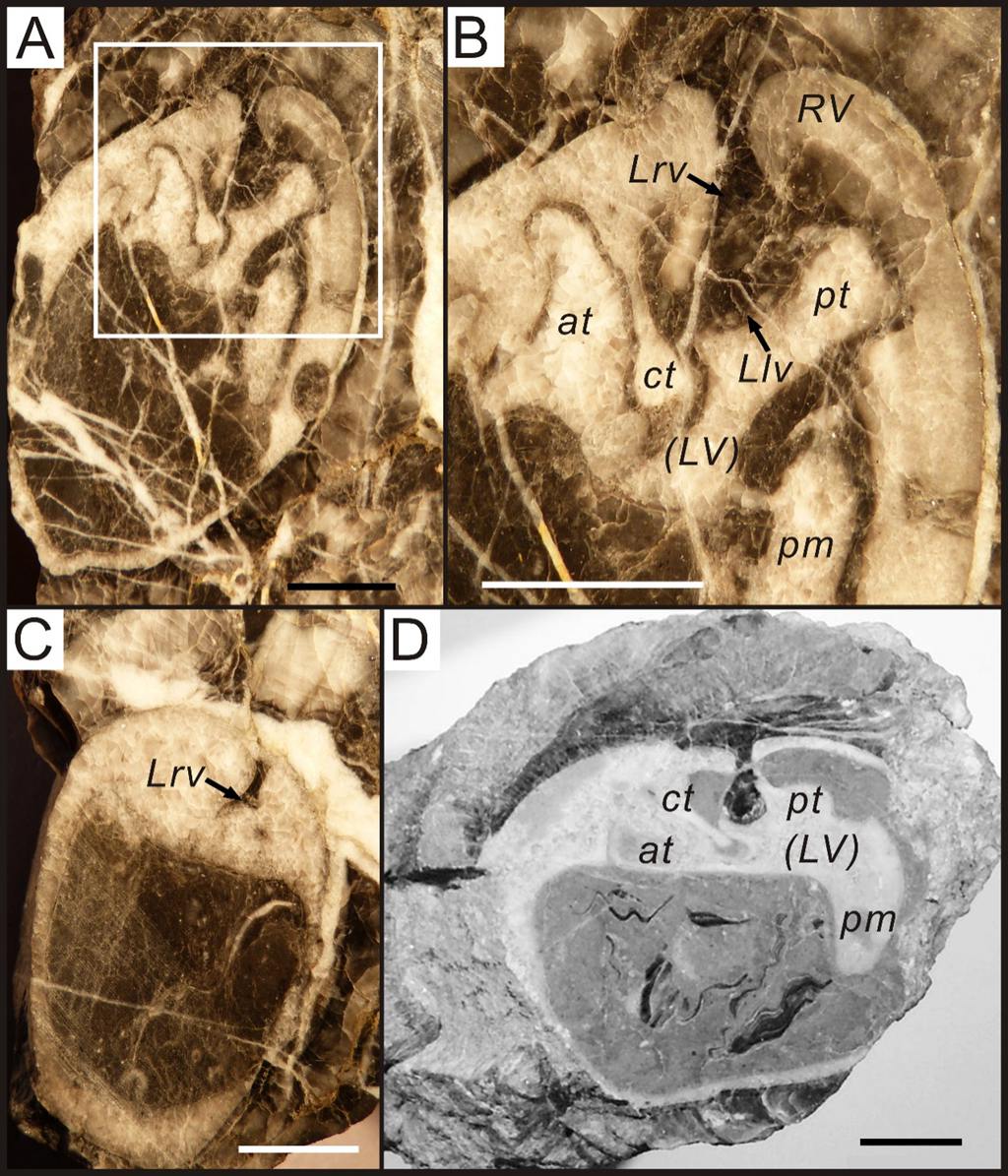Rudists (Order Hippuritida) differing from other mollusks by their bizarre shell-shape. They have important classification, evolutionary, stratigraphical and palaeobiogeographical implications, and the international rudist palaeontologists have carried out researches on rudists more than one and a half hundred years. But in China, there are only about ten publications about rudists and most of the taxa described by them need revision.
Recently, based on the investigation of material newly collected and/or photographed in the field, and revision of the previous publications, four rudist species are described from the mid-Cretaceous Langshan Formation of Lhasa block, and their stratigraphical and palaeogeographical significance also clarified by Dr. RAO Xin from Nanjing Institute of Geology and Palaeontology, Chinese Academy of Sciences and her colleagues.
Auroradiolites gen. nov. was proposed for the grouping of SW Asian to Pacific radiolitid species formerly attributed to Eoradiolites and characterized by a compact (non-celluloprismatic) outer shell layer. The new genus is represented in the Langshan Formation by A. biconvexus (Yang et al., 1982), including several other synonymized taxa.
Related information of this paper: Rao, X., Skelton, P. W., Sha, J. G., Cai, H. W. and Iba, Y. 2015. Mid-Cretaceous rudists (Bivalvia: Hippuritida) from the Langshan Formation, Lhasa Block, Tibet. Papers in Palaeontology. (First Published Online: 21 JUL 2015).

Map showing the outcrop of the Langshan Formation in the Lhasa block

The fossil localities in Rutog (A), Gegyai (B) and Zhongba(C) counties, and the lithological features of the Langshan Formation and the beds yielding rudists

Auroradiolites gen. nov.; transverse sections of RV in adumbonal view plus myocardinal elements of LV
(Information Source: Nanging Institute of Geology and paleontology, CAS)

